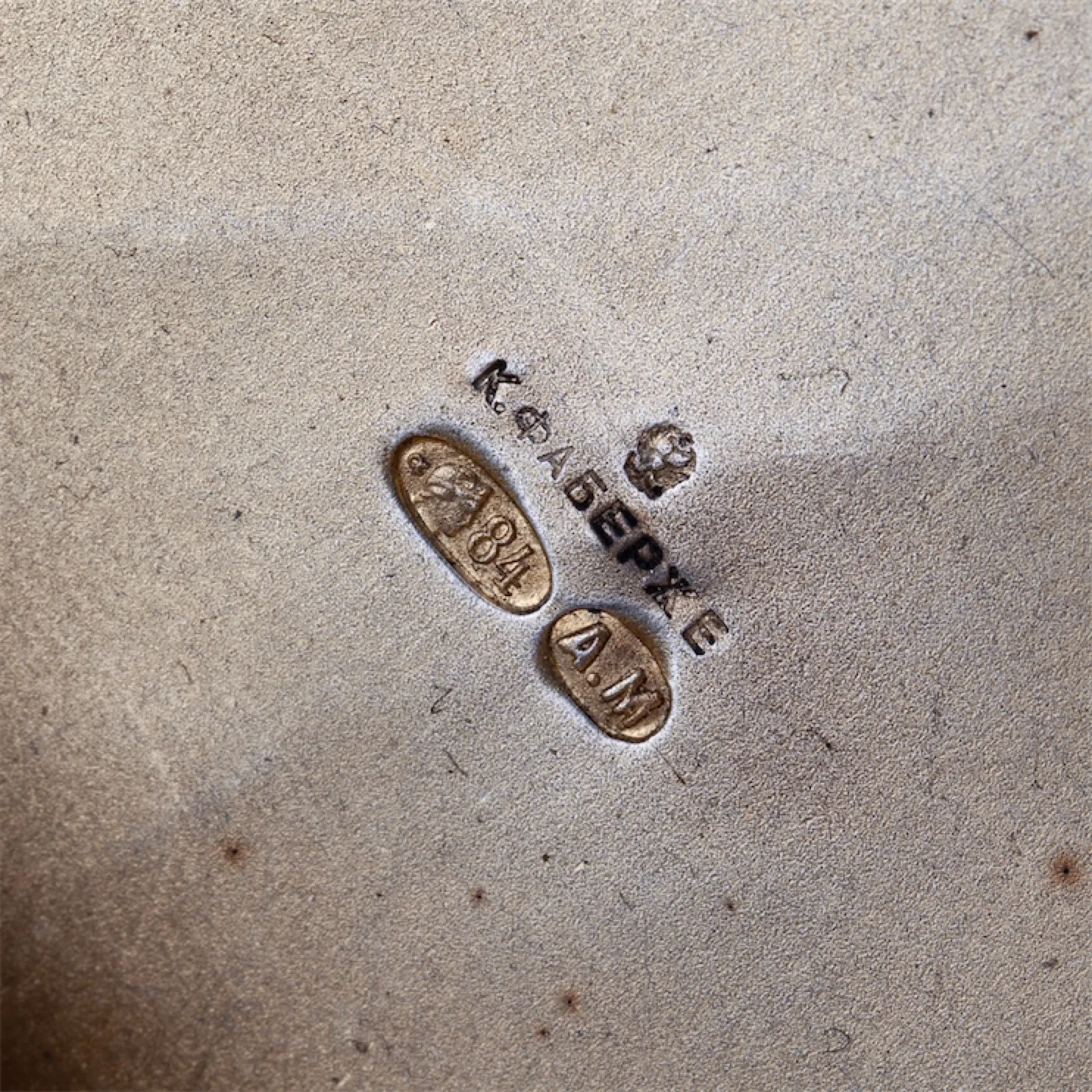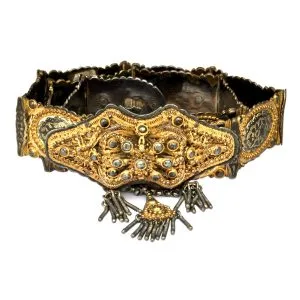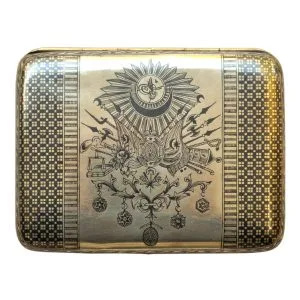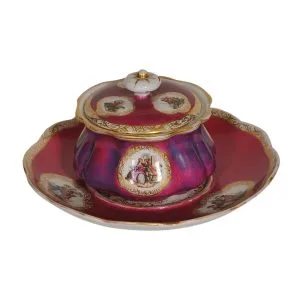Fabergé Rus Gümüş Altın Sigara Tabakası 155gr
$ 750
Fabergé Rus Gümüş Altın Sigara Tabakası
St. Petersburg
Rus Gümüş Altın Sigara Tabakası
Fabergé St. Petersburg damgalı, içi altın kaplama, açma butonu 56 zolotnik altın üzerine kabaşon safir taşlı
Gümüş Kuyumcusu: Karl Fabergé | Κ.ФΑБΕΡЖΕ (St. Petersburg 1908-1917)
Gümüş Ustası: Anders Mickelson (1839-1913) | (A.M)
Ayar Damgası: 84 zolotnik (золотни́к) | St. Petersburg (1908-1917) | 875 Ayar
Ağırlık: 155 gr
Ebat: 102x72x11 mm
Stokta yok
Fabergé Rus Gümüş Altın Sigara Tabakası
Peter Carl Fabergé, also known as Karl Gustavovich Fabergé (Russian: Карл Гу́ставович Фаберже́, Karl Gustavovich Faberzhe; 30 May 1846 – 24 September 1920), was a Russian jeweller best known for the famous Fabergé eggs made in the style of genuine Easter eggs, but using precious metals and gemstones rather than more mundane materials. He was one of the sons of the founder of the famous jewelry legacy House of Fabergé.
Taking over the family business
Upon the death of Hiskias Pendin in 1882, Carl Fabergé took sole responsibility for running the company. Carl was awarded the title Master Goldsmith, which permitted him to use his own hallmark in addition to that of the firm. In 1885 his brother Agathon Fabergé joined the firm and became Carl Faberge’s main assistant in the designing of jewelry.[4]
Carl and Agathon Fabergé Sr. were a sensation at the Pan-Russian Exhibition held in Moscow in 1882. Carl was awarded a gold medal and the St. Stanislav Medal. One of the Fabergé pieces displayed was a replica of a 4th-century BC gold bangle from the Scythian Treasure in the Hermitage. The Tsar, Alexander III, “Emperor and Autocrat of all the Russians”, declared that he could not distinguish the Fabergé’s work from the original and ordered that objects by the House of Fabergé should be displayed in the Hermitage as examples of superb contemporary Russian craftsmanship. The House of Fabergé with its range of jewels was now within the focus of Russia’s Imperial Court.
When Peter Carl took over the House, there was a move from producing jewellery in the then-fashionable French 18th century style to becoming artist-jewellers. Fabergé’s production of the very first so-called Fabergé egg, the Hen Egg, given as a gift from the Tsar to his wife Maria Fyodorovna on Orthodox Easter (24 March) of 1885 so delighted her that on 1 May the Emperor assigned Fabergé the title Goldsmith by special appointment to the Imperial Crown of that year. This meant that Fabergé now had full personal access to the important Hermitage Collection, where he was able to study and find inspiration for developing his unique personal style. Influenced by the jewelled bouquets created by the eighteenth century goldsmiths Jean-Jacques Duval and Jérémie Pauzié, Fabergé re-worked their ideas combining them with his accurate observations and his fascination for Japanese art.[citation needed] This resulted in a revival of the lost art of enameling and a focus on the setting of every single gemstone in a piece to its best visual advantage. Indeed, it was not unusual for Agathon to make ten or more wax models so that all possibilities could be exhausted before deciding on a final design. Shortly after Agathon joined the firm, the House introduced objects deluxe: gold bejewelled items embellished with enamel ranging from electric bell pushes to cigarette cases and including objects de fantaisie.
























